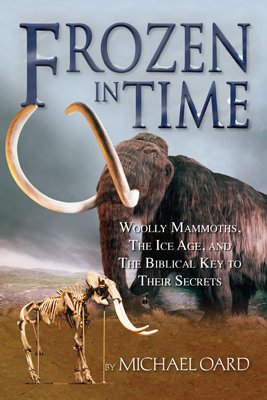
The Elephant Kind
Creationists understand that the classification category of species is not the same as the Genesis kind.
Creationists understand that the classification category of species is not the same as the Genesis kind. Species is a man-made classification that is generally defined as an interbreeding unit that is reproductively isolated from other units. It is well known, however, that individuals from different species or even different genera can potentially interbreed, but do not normally do so. There are factors that can cause “reproductive isolation” within a large group of animals. Animal behavior, size, environmental separation, or complex reproductive strategies can deter reproduction. Animals that can reproduce, but normally do not, would be included within one Genesis kind. In the classification system, however, the splitters have dominated (see appendix 1), so animals have been split up into different species within a genus. The original Genesis kind was undoubtedly a much broader classification than a species.
Then what are the boundaries of the Genesis kind and do all the types of elephants, living and fossil, fit into one kind? There is a fair amount of research into the definition of the various Genesis kinds, called baramins.1 This subfield of study within creationism is called baraminology. It is obvious that the human species is one Genesis kind or baramin, but when it comes to animals and plants, it is often difficult to classify them into baramins. Sometimes, the kind may be at the species level, as in modern humans, or at the genus level or sometimes at the family level. It should be rare that the kind is at the level of the order or class. This is why John Woodmorappe,2 in his book on the reasonableness of Noah’s ark, used the genus level as the average for the Genesis kinds. He ended up with only 16,000 animals that needed to be on Noah’s ark.3 So, there would have been plenty of room on the ark for all the animals that would have repopulated the earth after the Flood.
Defining the Genesis kinds is very difficult because we do not know enough about genetics, and it is at the genetic level that the kinds need to be defined. Even the test of interbreeding is not a foolproof determination because we do not know how genetic defects (mutations, etc.) have built up over time to interfere with the reproductive process. We also have come to realize that animals that appear to be one kind do not interbreed (at least normally) because of different ingrained behaviors (a scientific subfield called ethology), mating practices, and other such complications.
When it comes to elephants, do all the members of the order Proboscidea belong to one Genesis kind? We do not know for sure, since nearly all of the recognized species are extinct. One thing we do know is that each species within Proboscidea, and there were once over 500,4 is not a separate kind. The example presented in appendix 1 about elephant teeth from two different families found in the same animal should alert us to the probability that many of these defined species and genera are within the “elephant kind.”
Based on the amount of splitting and the poor classification system of the order Proboscidea, as well as the unique and many similar aspects of their morphology, I lean toward Jonathan Sarfati’s view.5 He thinks the order Proboscidea is probably one created kind — the elephant kind. It is known that the two living genera of elephant can interbreed successfully. The mammoths and mastodons that lived after the Flood may have diverged from two elephants that contained genes for all of the elephant kind. Mammoths are fairly close in anatomy to the Asian elephant. It is likely that if the woolly mammoth lived today that it could interbreed with the Asian elephant. In fact, mammoth researchers are even hoping to fertilize mammoth cells by placing a frozen mammoth sperm from a Siberian mammoth carcass into the womb of an Asian elephant.
Frozen in Time
Author Michael Oard gives plausible explanations of the seemingly unsolvable mysteries about the Ice Age and the woolly mammoths.
Read Online Buy BookFootnotes
- Marsh, F.L., Variation and fixity in nature, Pacific Press Publishing Association, Mountain View, CA, 1976. Frair, W., Baraminology — Classification of created organisms, Creation Research Society Quarterly 37(2):82–91, 2000.
- Woodmorappe, J., Noah’s Ark: A Feasibility Study, Institute for Creation Research, El Cajon, CA, p. 5–7, 1996.
- Woodmorappe, Noah’s Ark, p. 8–13.
- Maglio, V.J., Forward; in: The Proboscidea — Evolution and palaeoecology of elephants and their relatives, J. Shoshani and P. Tassy (Eds.), Oxford University Press, New York, p. ix, 1996.
- Sarfati, J., Mammoths — riddle of the Ice Age, Creation 22(2):10–15, 2000.

Answers in Genesis is an apologetics ministry, dedicated to helping Christians defend their faith and proclaim the good news of Jesus Christ.
- Customer Service 800.778.3390
- Available Monday–Friday | 9 AM–5 PM ET
- © 2026 Answers in Genesis

